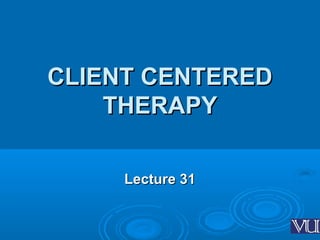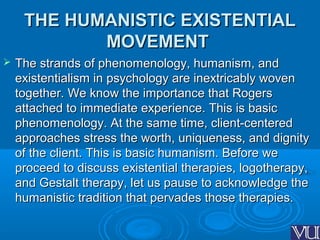Person-centered therapy, also known as client-centered therapy, places responsibility for treatment on the client while the therapist takes a nondirective role. Developed by Carl Rogers in the 1930s, it aims to increase self-esteem and openness through a supportive relationship where the therapist shows congruence, unconditional positive regard, and empathy. By conveying these attitudes, the therapist allows clients to freely explore issues most important to them. Person-centered therapy has been used to treat a variety of disorders and populations through individual, group, or family sessions.




























